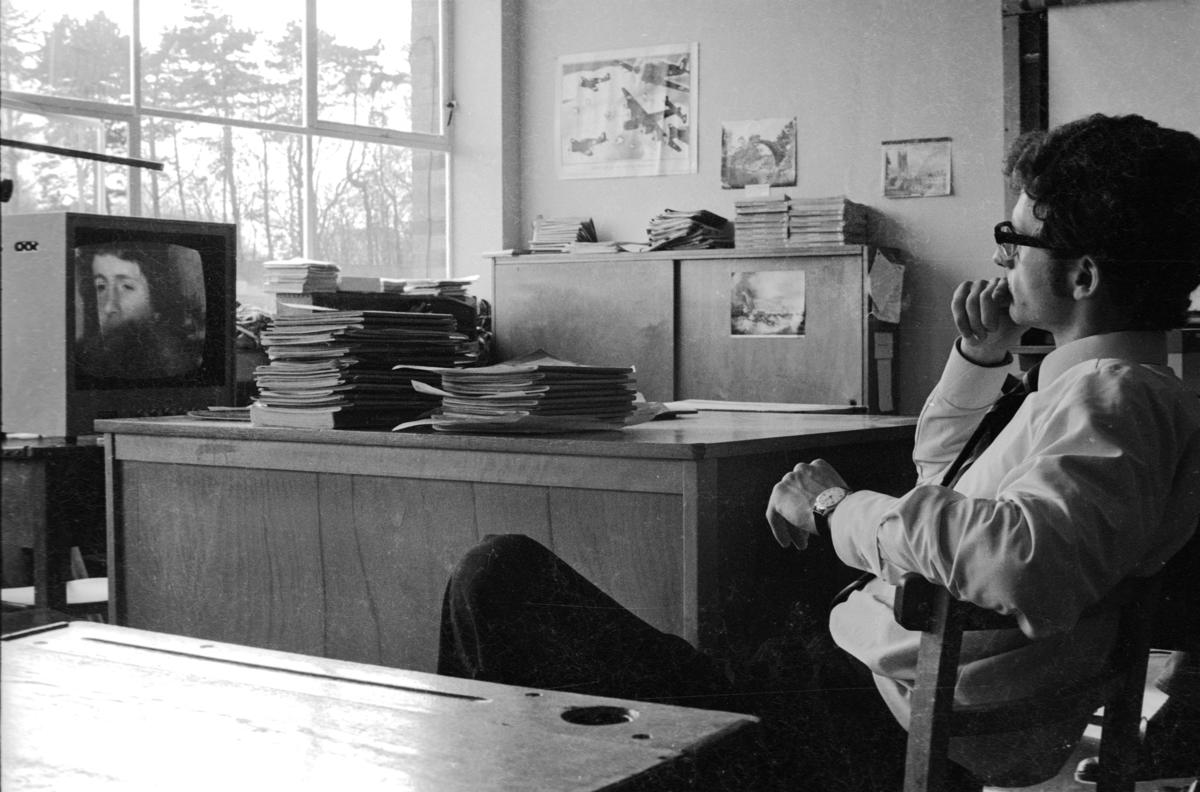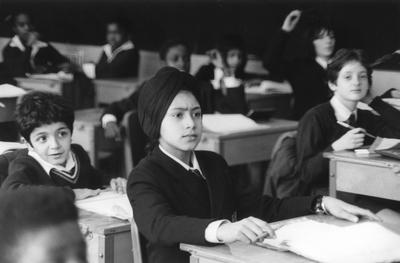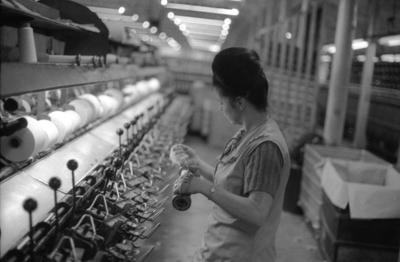Studies of Teaching in Four Oxfordshire Schools, UK
-
Darcy Lange
b.1946
d.2005

Title
Studies of Teaching in Four Oxfordshire Schools, UK
Details
| Production Date | 1977 |
|---|---|
| Collection(s) | Collection Govett-Brewster Art Gallery, New Plymouth. Purchased from Monica Brewster Bequest with the assistance of the Queen Elizabeth II Arts Council of New Zealand in 1983 |
| Accession Number | 83/1/11 |
| Media | U-matic 3/4" PAL 625 videotape. |
About
This work belongs to the series commonly known as Work studies in schools where Darcy Lange focused on the process of teaching and learning in the classroom. The first of these studies, Study of teaching in three Birmingham schools 1976, took place in 1976 in the English city of Birmingham where Lange videotaped a number of classrooms in three schools, seeking to represent different social classes by recording in both private and public schools. He also videotaped a wide range of subjects. In the later studies in four Oxfordshire schools in 1977, he focused on the teaching of art, history and science and systematically introduced the element of feedback. For the first time, Lange not only videotaped each class in action but also watched the tapes with the teachers and then the students, each time recording their reactions to the tapes. Their responses became incorporated into the work and guided its development, and by exposing this process, Lange turned these into studies of videotaping as a work activity.
Work studies in schools in many ways continues some of the concerns of Lange’s Work studies . However, here Lange introduces and examines language for the first time; particularly, how the subject is defined by linguistic parameters marking social differences such as gender, race, class, cultural and economic backgrounds, as well as ideological, thereby, as Lange stated, aiming to “illustrate the social breakdown within each class”.
As Guy Brett has argued, Lange never saw the Oxfordshire tapes as finished works but as “researches” and “an educational process”. Questions were posed to his subjects regarding the validity of their representations as teachers or pupils and the accuracy of the footage, as well as the potential function of this activity, raising the expectations about the appropriate ways that the footage could be used. By doing so, Lange introduced an element of agency to the activity of video making. By turning his subjects into their own audience, his videos radically introduced the prospect of transformation, undermining video aesthetics for the potential of social change. Here is where the issue of objectiveness raised in relation to documentary practices is addressed; the subjects are not passively portrayed but integrate their own voices, judging and commenting on the document itself, which in turn becomes part of the document.

